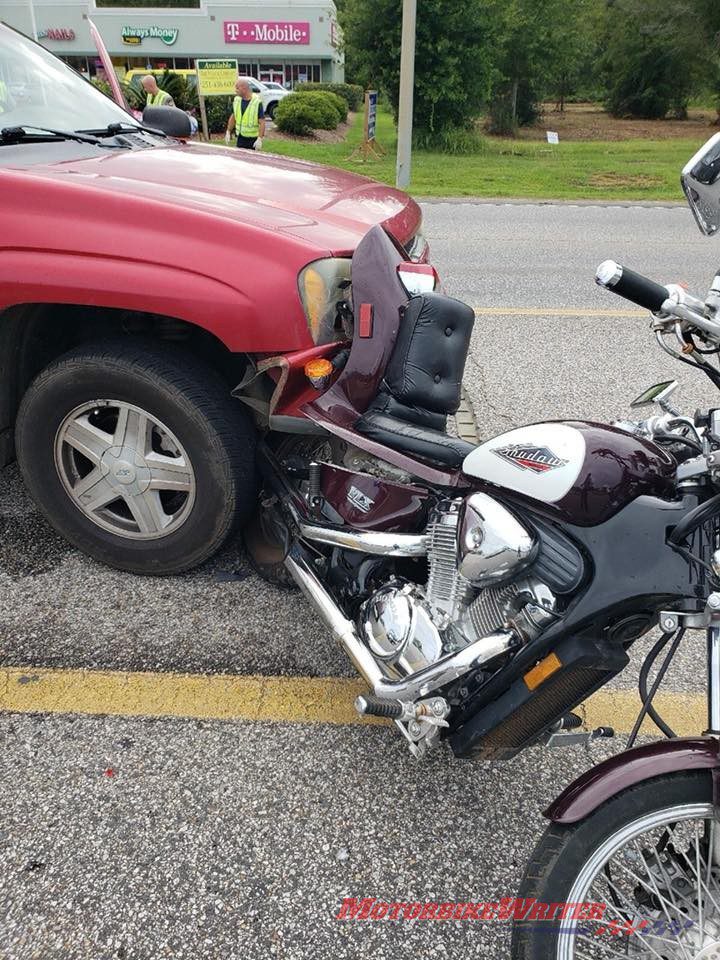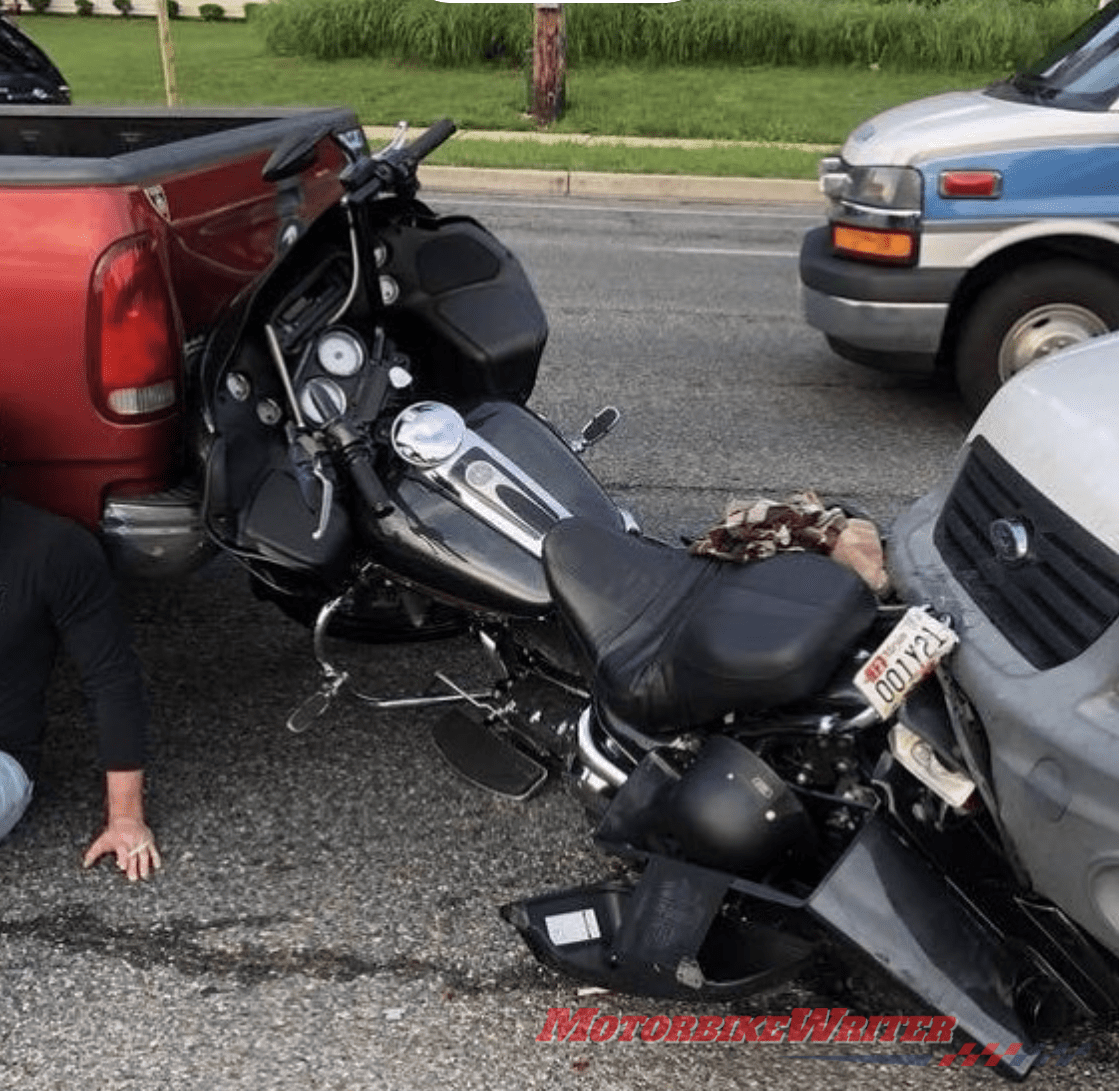(Contributed post for our North American readers)
When someone has been seriously injured in a motorcycle accident, they must determine liability if they want to pursue legal claims. Determining liability means figuring out which parties are responsible for causing the accident and the injuries. If another person or entity is responsible for causing your accident and injuries, you may be entitled to recover compensation for all of the losses that you have suffered as a result.
What are the most common causes of motorcycle accidents?
Motorcycle accidents can be caused by many different problems. Most accidents are caused by the negligent actions of motorists. However, some accidents can also be caused by the negligent actions of companies or other entities. Some of the most common causes of motorcycle accidents include the following:
- Motorists turning left onto a highway without seeing an oncoming motorcyclist
- Failing to yield
- Changing lanes in front of a motorcyclist without giving the cyclist enough room
- Failing to check blind spots
- Speeding
- Drunk or drugged driving
- Driving too fast for weather conditions
- Opening a door in the path of a motorcyclist when exiting cars parked along the road
- Making sudden stops
- Motorists failing to slow down in time to avoid rear-ending a motorcyclist
- Objects or debris in the road
- Poorly maintained roadways
- Defective parts
- Inadequate maintenance and repairs
Figuring out the causes of motorcycle accidents is important for determining who might be liable for causing them. In some cases, both the motorcyclist and the other driver will share fault. In others, either the motorist or the motorcyclist will be wholly to blame for the accident. Some cases might also involve several liable parties who contributed to the accident’s cause.
An experienced injury lawyer may work with an accident reconstruction expert to identify all of the causes and the responsible parties. Accident reconstruction experts take measurements at the accident scenes to recreate what happened in the moments leading up to the crash. They also get information from the vehicles that were involved and the damage caused to each of them. An attorney may also have investigators talk to people who witnessed the accidents to gain a better understanding of what happened.
Determining the responsible parties after a motorcycle accident
To pursue compensation in a motorcycle accident claim, you must first identify the parties holding legal liability for your accident. An experienced personal injury lawyer can conduct an in-depth investigation to help you to determine fault.
Some of the parties that can be responsible for causing a motorcycle accident include the following:
- The driver of the vehicle that was involved
- For motorcycle passengers, the motorcyclist
- The motorcycle’s manufacturer
- The manufacturer of a defective part
- The entity that is responsible for maintaining the roadway
- Motorcycle repair shop that negligently repaired the motorcycle
To hold a responsible party liable, the injured victim or the family of people who are killed in motorcycle accidents will need to prove that the defendants were negligent. In some cases, several parties may be at fault.
Proving negligence in a motorcycle accident
To prevail in a motorcycle accident claim, you must be able to prove that the defendant was negligent. The plaintiff has the burden to prove each of the elements of negligence by a preponderance of the evidence, including the following:
- The defendant owed a duty of care to the plaintiff.
- The defendant breached the duty of care.
- The defendant’s breach caused the accident and injuries.
- The plaintiff suffered harm.
All motorists owe a duty of care to people who are traveling on the roads around them to operate their vehicles with the same degree of safety that a reasonable person would under similar circumstances. For example, a motorist is expected to avoid driving while distracted or drunk and to follow the posted speed limits. Breaching a duty of care occurs when a person’s conduct falls below the standard expected of him or her for the situation. The plaintiff will still need to show that the plaintiff’s breach of the standard of care was the direct or proximate cause of the motorcycle accident and that the plaintiff was harmed because of it.
In some cases, the driver and the motorcyclist will share fault. California allows plaintiffs to recover damages even when they are partially to blame under a legal principle called comparative fault. In this type of situation, the jury will the degree of fault that is held by each party. The plaintiff’s damages will be reduced by his or her percentage of fault.
For example, if you are determined to have been 25% at fault for your accident and are awarded a gross verdict of $250,000, your damages will be reduced by 25% or $62,500 for a net award of $187,500.
If several parties contributed to the accident, the jury will determine the percentage of fault held by each party. The liable parties will be responsible for paying the percentages of damages that are attributed to them. For example, if one defendant is found to be 20% at fault while another defendant is found to be 80% at fault, the defendant that is 20% at fault will have to pay 20% of the total verdict award while the defendant who is 80% at fault will be responsible for paying 80% of the total.
Some American states have modified comparative fault rules. In those states, people who are found to be more at fault than the defendants will not be able to recover damages. For example, in a state with a modified comparative fault rule, a plaintiff will not be able to recover damages if the jury finds that he or she is 51% at fault or more. California has a pure comparative fault rule, however. This means that people who are injured in California can recover damages even if they have a greater degree of liability for their accidents than the defendants. For example, if you are 99% at fault for causing an accident, you could still technically file a personal injury lawsuit. However, any damages would be reduced by 99%.
Motorcycle accidents can be devastating for the victims and their families. Fortunately, the law provides families and victims with the ability to recover damages from the parties that caused their accidents and losses. Getting help from experienced personal injury lawyers might help motorcycle accident victims to determine the legal options that may be available to them. By determining liability, the attorneys might help their clients to maximize the compensation that they might be able to recover.



